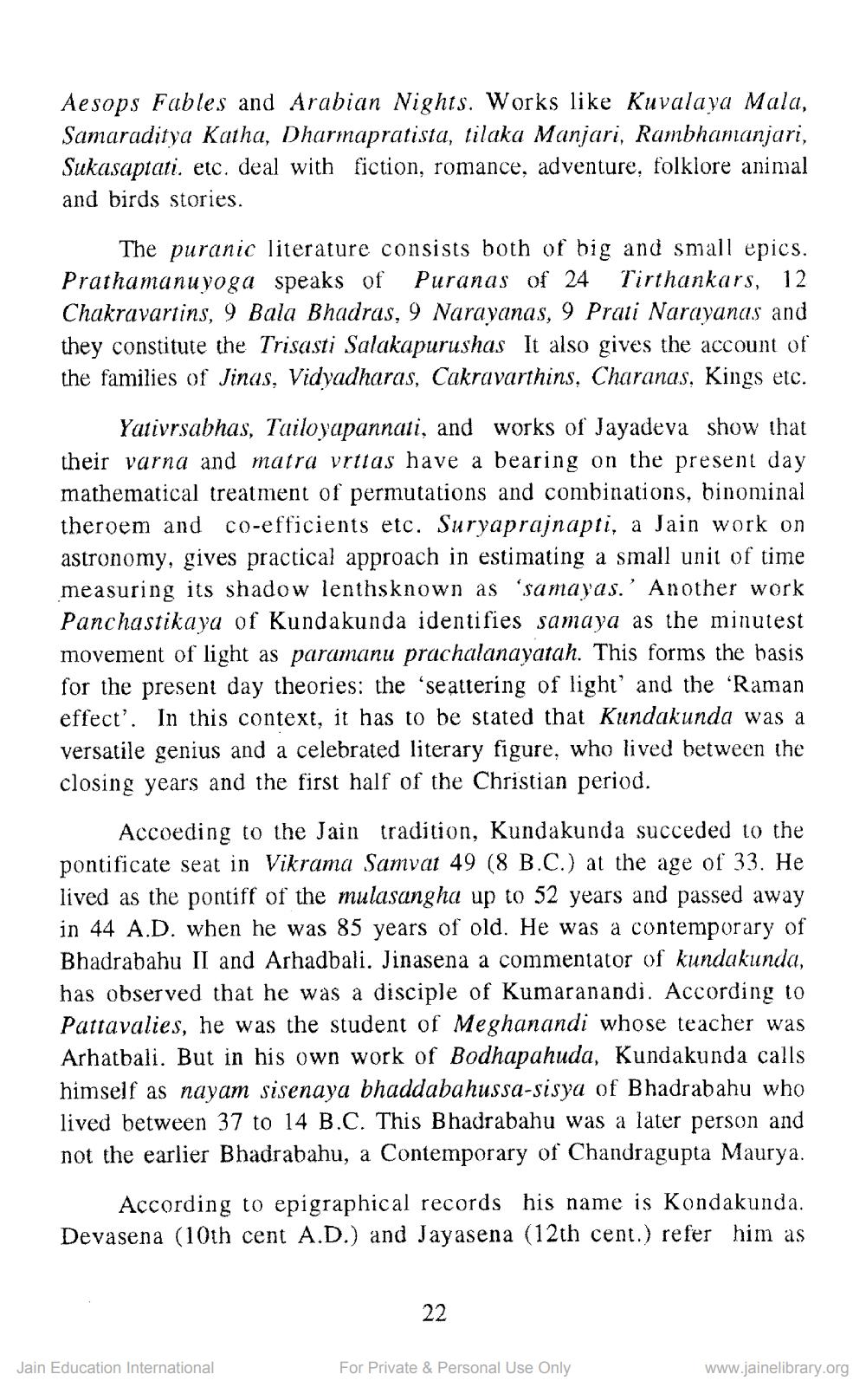________________
Aesops Fables and Arabian Nights. Works like Kuvalaya Mala, Samaraditya Katha, Dharmapratista, tilaka Manjari, Rambhamanjari, Sukasaptati. etc. deal with fiction, romance, adventure, folklore animal and birds stories.
The puranic literature consists both of big and small epics. Prathamanuyoga speaks of Puranas of 24 Tirthankars, 12 Chakravartins, 9 Bala Bhadras, 9 Narayanas, 9 Prati Narayanas and they constitute the Trisasti Salakapurushas It also gives the account of the families of Jinas, Vidyadharas, Cakravarthins, Charanas, Kings etc.
Yativrsabhas, Tailoyapannati, and works of Jayadeva show that their varna and matra vrttas have a bearing on the present day mathematical treatment of permutations and combinations, binominal theroem and co-efficients etc. Suryaprajnapti, a Jain work on astronomy, gives practical approach in estimating a small unit of time measuring its shadow lenths known as 'samayas.' Another work Panchastikaya of Kundakunda identifies samaya as the minutest movement of light as paramanu prachalanayatah. This forms the basis for the present day theories: the 'seattering of light' and the 'Raman effect'. In this context, it has to be stated that Kundakunda was a versatile genius and a celebrated literary figure, who lived between the closing years and the first half of the Christian period.
Accoeding to the Jain tradition, Kundakunda succeded to the pontificate seat in Vikrama Samvat 49 (8 B.C.) at the age of 33. He lived as the pontiff of the mulasangha up to 52 years and passed away in 44 A.D. when he was 85 years of old. He was a contemporary of Bhadrabahu II and Arhadbali. Jinasena a commentator of kundakunda, has observed that he was a disciple of Kumaranandi. According to Pattavalies, he was the student of Meghanandi whose teacher was Arhatbali. But in his own work of Bodhapahuda, Kundakunda calls himself as nayam sisenaya bhaddabahussa-sisya of Bhadrabahu who lived between 37 to 14 B.C. This Bhadrabahu was a later person and not the earlier Bhadrabahu, a Contemporary of Chandragupta Maurya.
According to epigraphical records his name is Kondakunda. Devasena (10th cent A.D.) and Jayasena (12th cent.) refer him as
Jain Education International
22
For Private & Personal Use Only
www.jainelibrary.org




